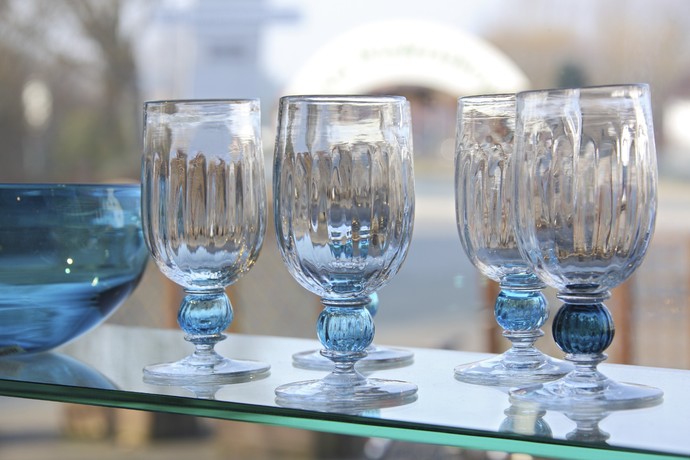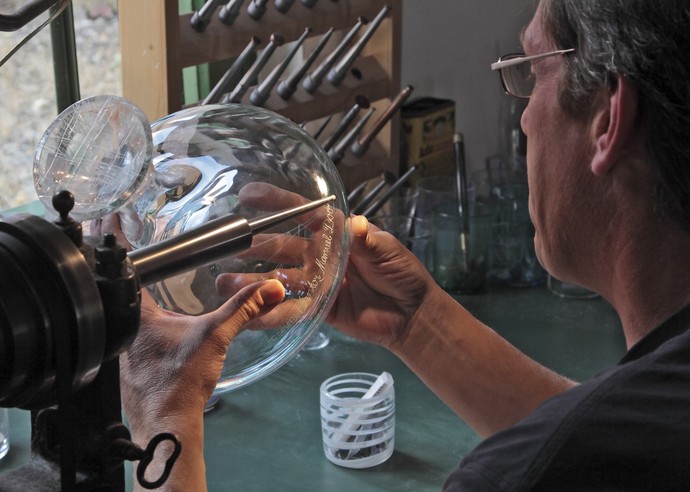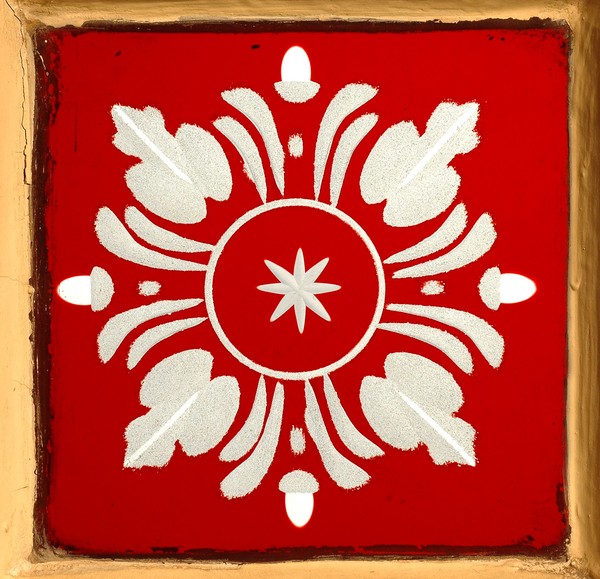Show production
Be fascinated by glass and the skill of our glassmakers during your visit. This is possible at the Gernheim Glassworks.
Glass studio
Since 1998, glassmakers have been working in a modern glass studio at the Gernheim furnace. The glass tower, now a rare industrial monument, is the only one of its kind still used for its original purpose. During museum opening hours, visitors can watch glassmakers at work at the furnace.
Grinding shop
Adjacent to the glass tower is the grinding shop, which is open to visitors. It provides an insight into cold finishing techniques, ranging from grinding and engraving to painting, gilding, pickling and vapour deposition.
Glass studio
Since 1998, glassmakers have been working in a modern glass studio at the Gernheim furnace. The glass tower, built in 1826 and now a rare industrial monument, is the only one of its kind still used for its original purpose. During museum opening hours, work is carried out at the furnace in front of visitors: glassmakers shape the viscous glass using traditional tools such as pipes, irons, scissors and tweezers. The techniques they use are 2,000 years old. What appears so effortless requires extensive training: it takes at least ten years of practice to master the traditional techniques perfectly.
Today, glasses based on historical models are made in the studio for the museum shop. Art objects are also created in collaboration between artists and glassmakers. Glasses are also blown in the studio for exhibitions at the site.
Glass tower
The imposing brick tower, also known as the glass tower or table tower, was built as a second smelter in 1826. Table glass was produced using the mouth-blowing process in the furnace built in the tower. Underneath the tower is a walkway that leads under the furnace.
The glass tower owes its distinctive conical shape to English models: company founder Fritz Schrader probably acquired his knowledge of this innovative construction during a trip to England. The conical structure enhances the chimney effect: the air – and thus the oxygen – was drawn through the stoking passage into the fire in the furnace and then back up to the tower opening. Fuel and temperature were used effectively, shortening melting times.
The modern furnace used today in the glass studio is built into the reconstructed vault of the last historic melting furnace from 1892. The work platform on which the glassmakers work is based on historical models. It makes it easier to use gravity for glass production: Liquid glass is removed from the 1200 °C furnace using a pipe, a long metal tube. After the first blow, a small bubble is formed. This bubble is repeatedly covered with hot glass and blown further until the balloon is large enough and contains enough glass for further processing. Glassmakers therefore know from the start of the process which steps are required to give their workpiece its final shape. To blow cylinders, for example, they can let the glass sag downwards from the pipe. This makes it easier to shape heavy pieces in particular.
Grinding shop
Adjacent to the glass tower is the grinding shop, which is open to visitors. It provides an insight into cold finishing techniques, ranging from grinding and engraving to painting, gilding, pickling and vapour deposition.
In the past, grinding machines were generally powered by water, in Gernheim by a horse-driven capstan for over 40 years and, from 1868 onwards, by a steam engine via transmissions. The engravers worked on so-called treadle engraving machines – foot-operated engraving blocks reminiscent of early sewing machines.
Lap glass panes
The cutting process creates magnificent decorative discs, known as ‘overlay discs’ or ‘frieze corners’, which were also produced here in the past. The ornaments are cut into mouth-blown flat glass, which consists of clear glass with a thin layer of coloured glass. The coloured side is cut so that the light-coloured decoration stands out from the coloured layer.
Delicate motifs are cut into the glass using engraving machines. The spectrum ranges from decorative friezes to landscapes. In collaboration between the glassworks and the engraving workshop, the Graal technique was also further developed in Gernheim: mouth-blown blanks made of several coloured layers of glass are engraved while cold. Finally, the blank is tempered again so that it can be covered with clear glass once more. Once cooled again, the motifs appear to float in the glass.
Button-making workshop
The grinding shop also houses a button-making workshop. Glass buttons have been produced mainly by hand since the 16th century. During production, glass rods are heated and the buttons are pressed out of the hot glass mass using tongs. This craft is still practised today.







